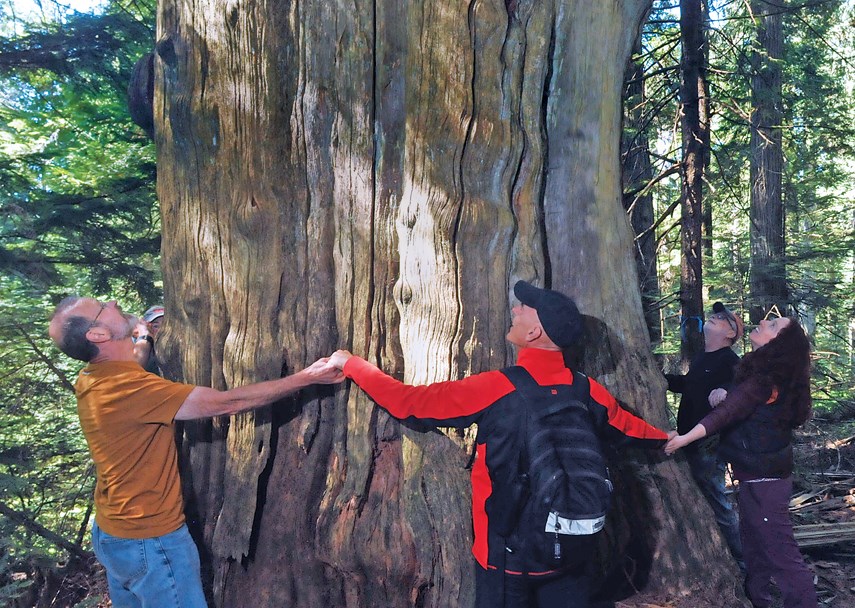“OK, just remember about the widow-makers as you navigate through the forest here. It is quite mature, and things do fall occasionally.”
The voice of David Cook, Old Growth Conservancy Society director and biologist, drifts through the forest as we make our way amongst the underbrush and massive trees of the West Vancouver Old Growth Conservancy.
Widow-makers, as we learned earlier in the tour of the Conservancy, are large branches that snap with alarming speed and fall with potentially deadly consequences for those in the wrong place at the wrong time.
But not to worry, all participants in this OGCS tour have signed their waivers of liability and are now under the spell of the forest and its natural beauty. They joyfully and respectfully engage their senses as they come face to trunk with the ancient enormous trees and the special environment that still exists on the upper slopes of West Vancouver.
The not-for-profit Old Growth Conservancy Society, formed in 2007, works with the District of West Vancouver in the management and stewardship of the 54-hectare protected temperate rainforest area at more than 750 metres elevation on Hollyburn Mountain, bordering the south side of Cypress Provincial Park and just west of Cypress Bowl Road. The society takes on the difficult balancing act of protecting the ecological integrity of the Conservancy, which means keeping people out, and at the same time making sure that the public has an understanding and appreciation of the uniqueness of the area, which means bringing people in.
The OGCS now offers free tours of the Conservancy on a limited basis throughout the year, with a maximum of eight people at a time able to take the approximately three-hour treks with OGCS volunteers and directors explaining the history and natural environment of the Conservancy. The area has a unique position as a transition from the upper limit of the Coastal Western Hemlock Zone to the lower limit of the Mountain Hemlock Zone.
Society directors Hugh Hamilton, David Cook and Alan Bardsley led this tour, pointing out areas of interest relating to biology, climate, geology and natural and man-made influences from First Nations culture to more modern pressures of logging and recreation. The Conservancy forest houses examples of western red cedars ranging from 665 to more than 900 years old among the different stands of coniferous forest.



